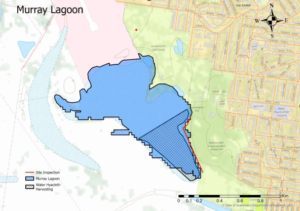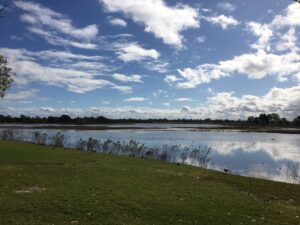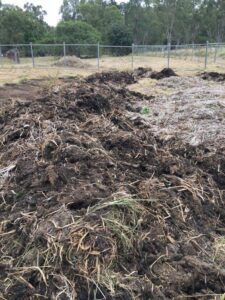
Making Water Work
By Stuart Elder
‘Making Water Work’ is the name of the Water Hyacinth Harvesting Pilot Project at Murray Lagoon, Rockhampton Botanic Garden. Murray Lagoon is a vital ecosystem and community resource situated at the gateway to Rockhampton City in Central Queensland on Darumbal Country and is a significant natural asset.
Located on the Fitzroy River floodplain, the lagoon connects directly to the Great Barrier Reef catchment and provides a picturesque setting popular for walking, running, cycling, and birdwatching.
Project site and historical significance
The project area encompasses 16ha between the Rockhampton Botanic Gardens & Zoo, Rockhampton Airport and Rockhampton Golf Course. The Botanic Gardens, renowned for their impressive plant and zoological collection, attract over 300,000 visitors annually. As one of Queensland’s oldest and most significant botanic gardens, the Rockhampton Botanic Gardens was proclaimed a Reserve for Botanic Gardens in 1869. The first curator, Scott Edgar, was appointed in 1873, and the garden’s construction spanned from 1873 to the 1930s. The gardens celebrated their 150th anniversary in December 2019 and were added to the Queensland Heritage Register on 23 July 1999.

Ecological importance of Murray Lagoon
Designated a Queensland State Significant Wetland, Murray Lagoon is a biodiversity hotspot essential for maintaining a healthy catchment and liveable community. It provides an ideal habitat and breeding ground for aquatic and bird life. During significant rainfall, the lagoon floods and interconnects with Yeppen Lagoon, flowing downstream into the Gavial Creek system before joining the Fitzroy River catchment.

Innovative environmental project
The Rockhampton Regional Council, in collaboration with the Fitzroy Basin Association (FBA), secured funding from the Cooperative Research Centre for Developing Northern Australia (CRCNA) and the Queensland Government’s Department of Agriculture and Fisheries (DAF) under the ‘Making Water Work’ programme. This project aimed to explore the beneficial reuse of common water hyacinth (Pontederia crassipes), an invasive aquatic plant native to South America.

Project objectives and goals
The project’s primary goal was to reduce nutrient concentrations in Murray Lagoon by removing water hyacinth and utilising the material to prevent erosion and enhance vegetation cover. The specific objectives were to:
- Remove approximately 500 tonnes of water hyacinth via mechanical harvesting, with half retained on-site for compost and mulch trials and the other half transported for horticultural use
- Bring together locally interested and skilled parties interested in the program
- Identify cost-effective extraction and handling methods to limit weed spread
- Determine the economic value of weed removal for water quality
- improvement, reduced impacts on native flora and fauna, or as a marketable product
- Expand knowledge on the weed’s life cycle in Northern Australian waterways
- Harvest and test reuse options for the aquatic weed
- Trial processing methods to produce a beneficial product
- Sample and analyse the harvested weed and products for key parameters
- Reduce the likelihood of large weed mats affecting water quality, aesthetics, and habitats
- Minimise herbicide use for long-term water hyacinth management
- Raise awareness about the controlled recycling of aquatic weeds into beneficial products

Project implementation and future work
The project involved mechanical harvesting and collection by contractor Aquatic Weed Harvesting Australia using a former garbage truck compactor, weed sampling and analysis, storage in windrows, and trials for mulch and compost. The harvested water hyacinth, which takes only four months to break down from a live plant into rich and useful mulch and compost, will be used for riparian restoration projects at the adjacent Yeppen Lagoon.
Rockhampton Regional Council’s Health and Environment Team followed up with herbicide applications during the winter season to control water hyacinth before the upcoming growing season as part of an ongoing IPM program.
Impact on local birdlife
Birdlife Capricornia data indicates a reduction in water birds in lagoons heavily covered by water weeds. This project aims to restore the natural balance, supporting a thriving ecosystem for all species.
In alignment with the Australian and Queensland Governments’ Reef2050 plan, this pilot project, while contributing a small percentage to the overall nutrient reduction targets, has the potential to significantly benefit parts of the system facing compounded impacts to the Barrier Reef catchment.
Stuart Elder
Curator, Rockhampton Botanic Gardens & Kershaw Gardens
Rockhampton Regional Council
T: (07) 4936 8064
E: stuart.elder@rrc.qld.gov.au
All images supplied by Stuart Elder
